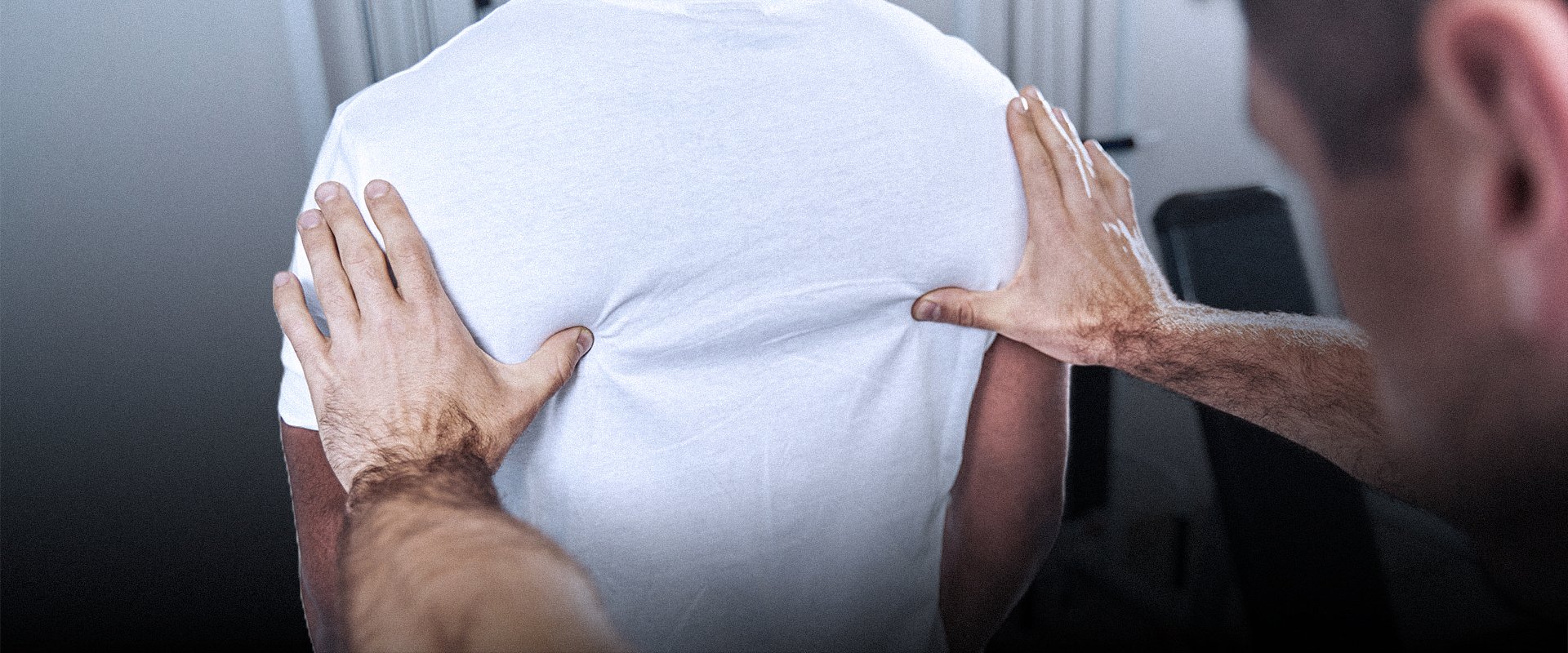
Physical Therapy for Thoracic Outlet Syndrome
AT EVOLVE
Physical Therapy for Thoracic Outlet Syndrome
HOW CAN PHYSICAL THERAPY HELP MY THORACIC OUTLET SYNDROME?
Thoracic Outlet Syndrome (TOS) is a condition involving compression of the veins, arteries and nerves in the lower neck and upper chest area that can cause a variety of symptoms in the arms and hands. A physical therapist can design a program to help address underlying impairments that can cause TOS in order to improve your symptoms.
WHAT DOES PHYSICAL THERAPY FOR THORACIC OUTLET SYNDROME LOOK LIKE?
Physical therapy for thoracic outlet syndrome involves addressing contributing factors in order to help reduce symptoms. My staff of therapists will apply the best, evidence-based techniques to address your pain and functional limitations. We will start with an initial evaluation to better understand your medical history and the pattern of symptoms you are experiencing. We will discuss your goals for physical therapy and perform an examination to assess your neck, upper chest and arms and any other areas of the body that may be contributing to your symptoms. With all of this knowledge in hand, we will create a custom program that may consist of hands-on techniques performed by our therapists combined with carefully prescribed movements and exercises performed by you in the clinic and at home.
WHEN WILL I BEGIN TO SEE RESULTS?
Through stretching, strengthening, manual therapy and postural re-education you should begin to experience improvements in pain, temperature changes, abnormal sensations and arm and hand strength as compression on the nerves and vasculature lessens. Resolution of symptoms may be partial or full depending on the severity and cause of the compression. Achieving long lasting results may take some time, but dedication to your program will not only help you achieve these results but will help to maintain many of the benefits of your treatment.
WHAT IS THORACIC OUTLET SYNDROME?
TOS refers to three different types of compressive conditions affecting the lower neck and upper chest. Below are symptoms commonly associated with each type of compression.
Arterial Compression
- Color changes in the hand and arm
- Poor circulation in the hands and fingers
- Swelling in the arm and hand
- Feeling of heaviness, pins and needles or numbness in the arms
- Sensitivity to cold in the arms, hands and fingers
- Symptoms are worse when the arms are overhead
- Weakness of the arm or neck muscles
- A weak or absent pulse in the arm
- Cool, pale appearance of the upper extremity
- Numbness, tingling, swelling or aching in the arm or hand
- Symptoms are worse when the arms are overhead
- Muscle wasting or atrophy at the base of the thumb
- Changes in hand color
- Numbness and tingling in the hand
- Clumsiness in the hands
- The hands may feel cold
- Dull ache in the neck, shoulder or armpit
- Symptoms are worse when the arms are overhead
- Trauma to the upper neck, shoulder or arm
- Tumors compressing the nerves
- Anatomical defects in that area
- Poor posture causing mechanical compression
- Pregnancy
- Repetitive movements of the arm and shoulder, especially overhead
End Injury Progression
Physical therapy for Thoracic Outlet Syndrome has proven to prevent injury, slow and even stop pain issues, improve performance, and reverse injury progression in many cases.
Relieve Pain
The movements used in this technique can target your entire body helping you to manage discomfort and pain during the course of your physical therapy treatments.
Improve Range of Motion
Posture awareness is an important area to focus on due to the fact that certain positions may cause you further discomfort and pain.
Restore Mobility
You can regain mobility and flexibility by taking part in the stretches and exercises as prescribed by your physical therapist.
How Long Will Physical Therapy for Thoracic Outlet Syndrome Last?
If you decide to work with a physical therapist to help with thoracic outlet syndrome, your entire treatment plan could consist of around 8-20+ different physical therapy sessions that will each last 60-90 minutes. Once you complete your customized physical therapy treatment plan, you will be able to continue to do the prescribed stretches and exercises utilized during your PT sessions yet in the comfort of your own home.
HOW IS THORACIC OUTLET SYNDROME MANAGED?
Persons with TOS often respond positively to physical therapy intervention. A doctor may also prescribe anti-inflammatory medication to reduce inflammation or medications to prevent or break up blood clots. If physical therapy and medication management to relieve the pressure around the thoracic outlet is not successful, then a surgeon may recommend thoracic outlet decompression surgery to remove the structures that are compressing the nerves or vasculature. If a surgical route is chosen, you may work with a physical therapist afterward to help restore function in the arm and address any impairments that may result from the surgery such as scar tissue build up.
PHYSICAL THERAPY INTERVENTIONS FOR THORACIC OUTLET SYNDROME
Physical therapy treatment for TOS aims to reduce the compression of the nerves, arteries or veins in the lower neck and upper chest in order to reduce unwanted symptoms and restore function to the involved arm and hand. Though your physical therapy plan will be individualized to your needs, below are common interventions physical therapists use in the management of TOS:
Patient education: educating patients about TOS, its causes, risk factors and strategies for management
Stretching and joint mobilization: preserving or improving flexibility and mobility of the muscles and joints in the shoulder, neck, chest and upper back is important to help relieve compression throughout the lower neck and chest. Your therapist may perform passive stretching or joint mobilization or teach you self-stretches you can perform on your own.
Postural re-education: Postural impairments can be a cause of TOS. Addressing postural muscle strength and length and joint flexibility can help improve posture and reduce compression of nerves and vasculature.
Muscle strengthening: Having strong muscles can help reduce symptoms of TOS. Your physical therapist will test your muscles to identify areas of weakness then prescribe a progressive strengthening program to help strengthen the muscles around the hand, arm, chest, neck and back.
Pain management: Addressing pain and discomfort is an important part of working with a physical therapist. Your PT may use hands-on interventions, modalities or teach you stretches or exercises to help reduce pain caused by TOS.
Functional task training: As symptoms of TOS improve, it is important to address activities and tasks that may have been affected by the presence of TOS-related symptoms. Your therapist will work with you to help you restore your prior level of functional activity for tasks in the home, community and at work.
The symptoms of thoracic outlet syndrome can be frustrating but getting the right diagnosis is an important step in accessing the right treatment. If you have TOS or are experiencing symptoms that could indicate TOS, call today to schedule an evaluation with one of the physical therapists at Evolve. We are here to help you feel better and support you on the healing journey.
Mill Basin (located in Harbor Fitness)
6161 Strickland Ave
Brooklyn, NY 11234
Monday: 7am-8pm
Tuesday: 7am-8pm
Wednesday: 8am-5pm
Thursday: 7am-8pm
Friday: 8am-1pm
Park Slope (located in Harbor Fitness)
550 5th Ave.
Brooklyn, NY 11215
Monday: 9am-8pm
Tuesday: 8am-6pm
Wednesday: 9am-8pm
Thursday: 8am-6pm
Friday: 8am-3pm
Our Newest Brooklyn Physical Therapy Clinic Locations
Gravesend
372 Avenue U
Brooklyn, NY 11223
Monday-Thursday: 8am-8pm
Friday: 8am-3pm
Midwood
945 Kings Highway
Brooklyn, NY 11223
Monday-Thursday: 12pm-8pm
Ready to take the next step to a healthier you?
Contact Us Today!
PHYSICAL THERAPY FOR THORACIC OUTLET SYNDROME!
Need physical therapy for Thoracic Outlet Syndrome?
Let our caring and compassionate physical therapists help you with relieving pain while getting you back on your feet comfortably.
Call now to schedule your first PT consultation free of charge.
Call: 1-718-957-2422







